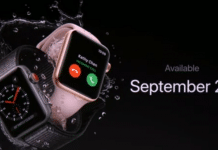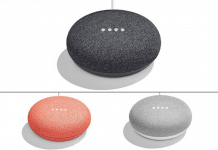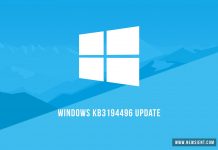‘DNS Server Not Responding’ error must have made a fuss of your evening, resuming all your work trying to connect to the internet but failing with the same error message every single time stating this. It may happen when you try to connect a device to either hotspot or Wi-Fi router or many other reasons which may cause this issue.
DNS stands for Domain Name Server, which is more like a telephone directory, stores all the domain names which would be converted to IP address in order to navigate to that page. As we can remember names better than numbers, websites are named with alphanumeric with an extension such as .com, .in., .edu etc rather than just numbers.
Most of the case of ‘DNS Server Not Responding’ cases are found on Windows 7, Windows 8.1, and Windows 10. In such cases, the devices fail to connect to the internet. DNS server errors may pop up due to many network related issues. Thorough troubleshooting with step-by-step procedure would help us diagnose the problem. The best method would be by starting a Windows diagnostics test from which we can find out the problem.
How can I run Windows Diagnostics test?
Contents
The Windows Diagnostic Test is simple and easy on a Microsoft Windows PC. Once you get an error message it’s easier as it would specifically point out a problem, as ‘DNS Server Not Responding’ is generalized and vague. It would take 7 simple steps to diagnose the Internet connection problem.
- Click on the Start button and look for Control Panel and open it. In the case of Windows 10, click the start button and type ‘Control Panel’.
- Open ‘Network and Internet’ from Control Panel.
- Open Windows Network and Sharing. (First option in Network and the Internet)
- Now you see Troubleshoot Problems option below set up a new connection click on it.
- There would 5 option inside the Troubleshoot problems, start with the first one and continue the same way for all the 5 until a window pops up stating any error.
- Once the troubleshooting is complete look for ‘Problems Found’ and check for any error message.
- This would narrow down the problem and would give a specific error which may lead to the exact problem. Googling the error would provide the specific problem behind it.
How to fix the ‘DNS Server Not Responding’ issue
Getting to the root cause behind the DNS error is the key to find a fix. We need to isolate the problem. If not sure about the Internet Connection then check with the ISP once before proceeding with the whole procedure.
Some of the common errors behind the DNS Server Not Responding are:
- Malfunctioning TCP/IP or DHCP services.
- Antivirus blocking the computer from connecting to the internet.
- Faulty modems/ router.
- ISP connection fail, MAC address clone problem.
How to solve TCP/IP and DCHP issues
The TCP/IP inside the OS may malfunction resulting in a TCP/IP issue. A simple solution for this would be Rebooting the computer which would clear the temporary caches in the computer responsible for the problem.
If this doesn’t work then Release / Renew of IP would fix. Here is a simple method to Release/ Renew IP.
- Click on the Windows button and click on Run (Windows 7), else click Win+R which pops the Run tab.
- In the Run tab type cmd and press Enter. Which would open with a black-screen.
- Type ipconfig/ release command and hit Enter button.
- Once the command proceeds you could see text running down the screen. Once it stops ‘IP Address’ would be on the screen beside which there must be 0.0.0.0. This happens as the command releases the IP address from the network adapter.
- Type ipconfig/ renew to get a new address.
- Once the command finishes on the command prompt it would give an empty line with a blinking underscore, at this point you can close the window.
Some of the TCP/IP network uses DHCP (Dynamic Host Configuration Protocol) to assign the IP address to the clients. DHCP assigns a primary and a secondary IP on the DNS server apart from the private IP address of the device. In most of the cases, the malfunction of DHCP could be solved just by rebooting the device. DHCP must be used only when both the router and the device you are using have DHCP enabled.
How to handle DNS Provider issues
In most of the cases, the device being used at home/office would be getting the DNS Server from the ISP (Internet Service Provider). Where there is a huge amount of traffic breakthrough for the network provider because of which DNS Provider may stop working. It’s a good thing to check with the ISP before starting a troubleshoot.
As DHCP, TCP/IP is generally set to private DNS Server it can be changed back to the public DNS in order to access the internet connection. Some of the free public DNS are Google, OpenDNS etc. This switch can be done by the admin of the network and needs to access to the router’s login. Preferably in an emergency for a short time. This can be done from network and sharing option which would again be temporary and will not stay for a long time as the network would override and put back to the default settings.
How to fix Antivirus which is blocking the internet access
When an antivirus is installed on a computer it would look for safety and security of the device. But some of the settings where extra security would block the internet access which is the main source of virus attack. In such cases, the antivirus should be blocked in order to access the internet.
Antivirus files are generally in (dat) database files. When we connect to the internet some of the antiviruses would look for the updates from their websites and download them and install it. The whole process happens in the background which we users won’t be aware of. Such latest updates may block the internet access just to secure the device.
A simple method to rectify whether the DNS error is from antivirus is by turning off the antivirus and to run the Windows Diagnostic test. If the network connects successfully and internet connection is built then antivirus was blocking the internet access the whole time. Contact the antivirus and seek for the solution. Else look for the thread related to the issue on Google which would guide you to set the antivirus.
How to know if the router/ modem isn’t working properly?
A faulty router can cause this problem where it may block the DNS Server due to software glitches in the router. A simple way is to turn off the router and re-check with the internet connection.
If that doesn’t work then reset the router by pressing the reset button behind/ below the router for 5 seconds with the help of a pin. Once this step is done you need to configure the router back by going to the default router’s page. The address of the router would be mention behind the router or on the manual/cartoon of the router (ex: 192.162.1.1). User ID and password of both router and ISP must be known, before proceeding with this step.
Incase of modern routers with memory and chipset, the router would have a software update which may fix the issue. Or if the router is very old and had issues even before then it would be better to change the router.








































